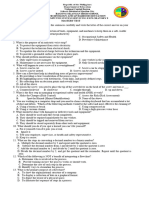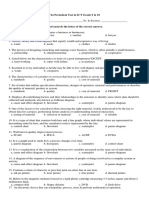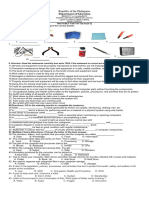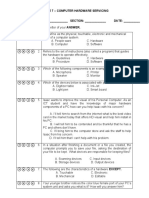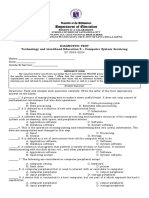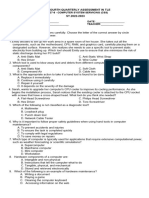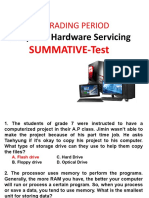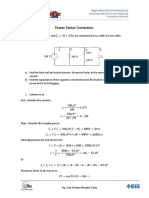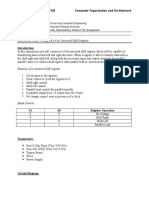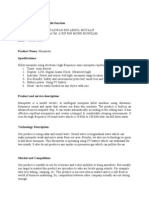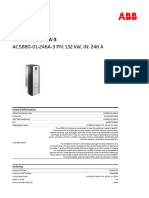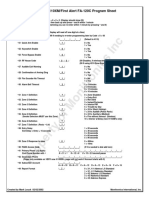0% found this document useful (0 votes)
92 views6 pagesPRE TEST TLE ICTComputer Hardware Servicing
This document contains a 50 question pre-test for a second quarter technology course covering topics in computer hardware servicing, flowcharting, and workplace safety. The questions assess knowledge of tools used for computer repair, computer components, flowchart elements, hazards and risks, and personal protective equipment. Correct answers are to be recorded in a notebook.
Uploaded by
yuvegajohnmarkvelascoCopyright
© © All Rights Reserved
We take content rights seriously. If you suspect this is your content, claim it here.
Available Formats
Download as PDF, TXT or read online on Scribd
0% found this document useful (0 votes)
92 views6 pagesPRE TEST TLE ICTComputer Hardware Servicing
This document contains a 50 question pre-test for a second quarter technology course covering topics in computer hardware servicing, flowcharting, and workplace safety. The questions assess knowledge of tools used for computer repair, computer components, flowchart elements, hazards and risks, and personal protective equipment. Correct answers are to be recorded in a notebook.
Uploaded by
yuvegajohnmarkvelascoCopyright
© © All Rights Reserved
We take content rights seriously. If you suspect this is your content, claim it here.
Available Formats
Download as PDF, TXT or read online on Scribd
/ 6











